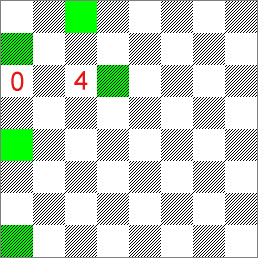
|

|
The longstanding popularity of chess has paved the way for a rich tradition of chess-related puzzles and composed problems. These puzzles assume a familiarity with the pieces and rules of chess, but set different objectives than a standard game. For example, one might be called upon to deduce the last move played, or the location of a missing piece, or whether some player has lost the right to castle. Sometimes the objective is antithetical to normal chess, such as helping (or even compelling) the opponent to checkmate one's own king.
The most common chess puzzle takes the form of checkmate in N moves. Such puzzles may derive from studies which were intended to help a student of the game learn how to seal a victory, but have since evolved into an entirely separate art. The puzzle positions are seldom similar to positions from actual play, and the challenge is not to find a winning move, but rather to find the (usually unique) move which forces checkmate as rapidly as possible. Orthodox chess puzzles involve positions that can arise from actual game play (although the process of getting to that position may be unrealistic.) Heterodox chess puzzles involve conditions that are impossible with normal play such as multiple Kings, or chess variants, while fairy puzzles emply pieces not used in orthodox chess, such as the amazon (a piece combining the powers of the queen and the knight).
One of the many types of chess puzzles is to deduce the location of invisible pieces based on information about how many times certain squares are attacked. For example, in the position below, the challenge is to place a white king, queen, rook, knight, and bishop in the five highlighted squares so that the squares with numbers in them are attacked zero and four times respectively. (See the talk page for the answer.)

|

|
Chess puzzles can also be regular positions from a game (with normal rules),
usually meant as training positions, tactical or positional, from all fases of
the game (openings, middlegame of endings). They can range from a simple "Mate
in one" combination to a complex attack on the opponents king.
Solving tactical chess puzzles is a very common chess teaching technique.
Although it is unlikely that the same position will occur in a game the student
plays, the recognition of certain patterns can help to find a good move or plan
in another position.
See Also: